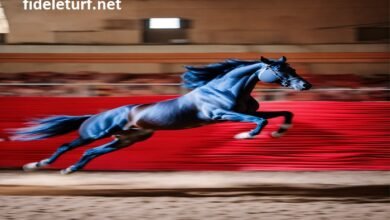Backyard Turf: Benefits, Installation and Maintenance

If you are looking for a way to transform your backyard into a beautiful, low-maintenance and eco-friendly space, you might want to consider installing artificial turf. Artificial turf, also known as synthetic grass, is a surface of synthetic fibers that looks and feels like natural grass. It can be used for various purposes, such as landscaping, sports, playgrounds and pet areas. In this blog post, we will explore the benefits, installation and maintenance of backyard turf, and help you decide if it is the right choice for your home.
Benefits of Backyard Turf
There are many advantages of choosing artificial turf over natural grass for your backyard. Here are some of the main ones:
- Appearance: Artificial turf can provide a lush, green and realistic look for your backyard all year round. It does not fade, wilt or brown due to weather conditions or seasons. You can also choose from different colors, textures and heights to suit your preference and style.
- Durability: Artificial turf can withstand heavy use and traffic without getting damaged or worn out. It is resistant to pests, weeds, diseases and mold. It does not need to be mowed, trimmed or edged, which saves you time and money on lawn care equipment and services.
- Water conservation: Artificial turf does not need to be watered, except for occasional rinsing to remove dust and debris. This can save you a lot of water and money on your utility bills, especially in areas with water restrictions or droughts. It also helps to reduce water pollution and runoff by preventing fertilizers and pesticides from leaching into the soil and groundwater.
- Environmental friendliness: Artificial turf can reduce your carbon footprint by eliminating the need for gas-powered lawn mowers, blowers and trimmers, which emit greenhouse gases and noise pollution. It also reduces the amount of organic waste that ends up in landfills or compost bins. Some artificial turf products are made from recycled materials, such as plastic bottles or tires, which help to conserve natural resources and reduce waste.
- Versatility: Artificial turf can be installed on any type of surface, such as soil, concrete, asphalt or wood. It can also be customized to fit any shape or size of your backyard. You can create different zones or patterns with artificial turf, such as a play area for kids, a putting green for golfers, or a patio for relaxing.
Installation of Backyard Turf
Installing artificial turf in your backyard is not a DIY project that you can do by yourself. It requires professional skills and tools to ensure a proper and safe installation. Here are the basic steps involved in installing artificial turf:
- Site preparation: The first step is to remove the existing grass or vegetation from your backyard. You can use a sod cutter or a shovel to cut and dig out the sod. You will also need to dispose of the sod properly, either by renting a dumpster or hauling it away. Next, you will need to level and grade the soil to create a smooth and even surface. You may need to add or remove soil depending on the slope and drainage of your backyard.
- Base installation: The next step is to install a base layer of crushed rock or gravel over the soil. This will provide a stable and porous foundation for the artificial turf. You will need to spread the base material evenly across the area and compact it with a roller or a compactor. You may also need to add water throughout the process to help with compaction.
- Weed barrier installation: The third step is to install a weed barrier over the base layer. This will prevent any weeds or grass from growing through the artificial turf. You will need to cut and lay the weed barrier fabric over the area and secure it with staples or nails.
- Turf installation: The fourth step is to install the artificial turf over the weed barrier. You will need to unroll the turf rolls and let them acclimate in the sun for half a day. Then you will need to cut and fit the turf pieces according to the shape and size of your backyard. You will also need to join the seams of the turf pieces with glue or tape. Finally, you will need to secure the edges of the turf with nails or spikes.
- Infill installation: The last step is to install the infill over the artificial turf. Infill is a material that fills in the gaps between the synthetic fibers and adds weight and stability to the turf. There are different types of infill available, such as sand, rubber or organic materials. You will need to spread the infill evenly over the turf using a drop spreader or a broom. Then you will need to brush the infill into the turf using a power broom or a rake.
Maintenance of Backyard Turf
Although artificial turf does not require as much maintenance as natural grass, it still needs some care and attention to keep it looking its best. Here are some tips for maintaining your backyard turf:
- Clearing: You should clear your artificial turf of any debris, such as leaves, twigs, dirt or pet waste, on a regular basis. You can use a rake, a leaf blower or a vacuum to remove the debris. You should also dispose of the debris properly and not leave it on the turf.
- Rinsing: You should rinse your artificial turf with water occasionally to wash away any dust, pollen or stains. You can use a hose, a sprinkler or a pressure washer to rinse the turf. You should also avoid using any harsh chemicals or detergents that may damage the turf or harm the environment.
- Brushing: You should brush your artificial turf with a stiff-bristled broom or a power broom periodically to fluff up the fibers and restore their appearance. You should also brush the turf in different directions to prevent matting and flattening. You should avoid using any metal or sharp tools that may cut or tear the turf.
- Sanitizing: You should sanitize your artificial turf if you have pets or children who use it frequently. You can use a mild disinfectant or a vinegar solution to spray the turf and kill any bacteria or germs. You should also rinse the turf thoroughly after sanitizing it.
Conclusion
Backyard turf is a great option for homeowners who want to enjoy a green and beautiful lawn without the hassle and expense of natural grass. Artificial turf offers many benefits, such as appearance, durability, water conservation, environmental friendliness and versatility. However, artificial turf also requires professional installation and some maintenance to ensure its longevity and quality. If you are interested in installing artificial turf in your backyard, you should contact a reputable and experienced contractor who can provide you with a free estimate and a quality service.
Read more about: appkod.net




